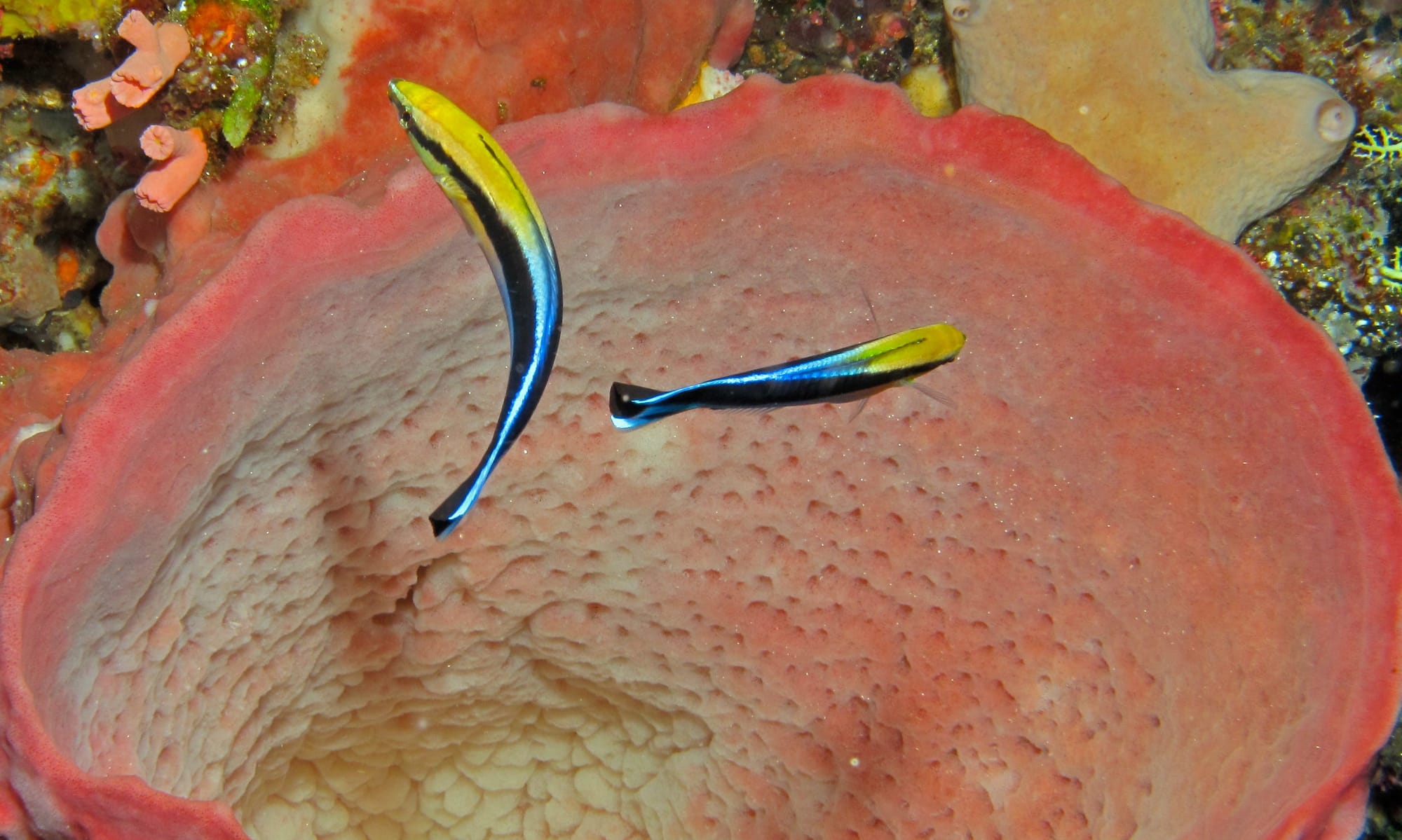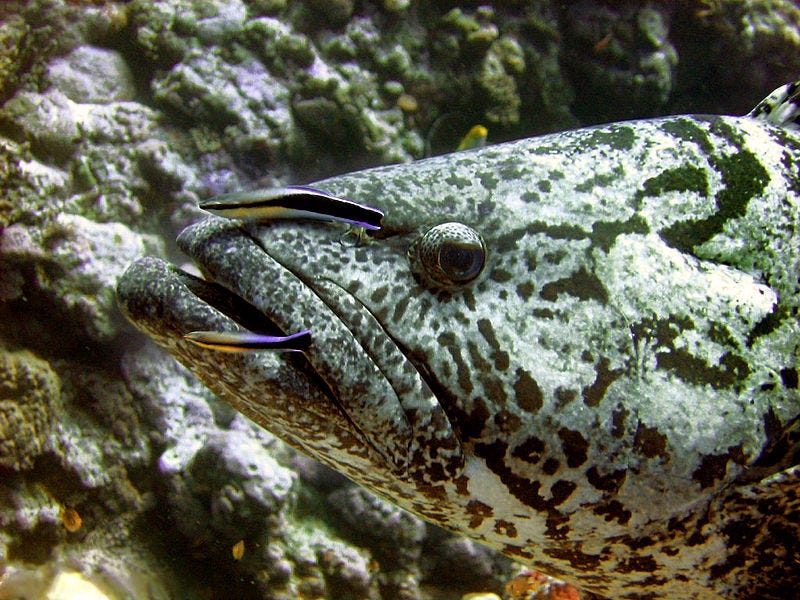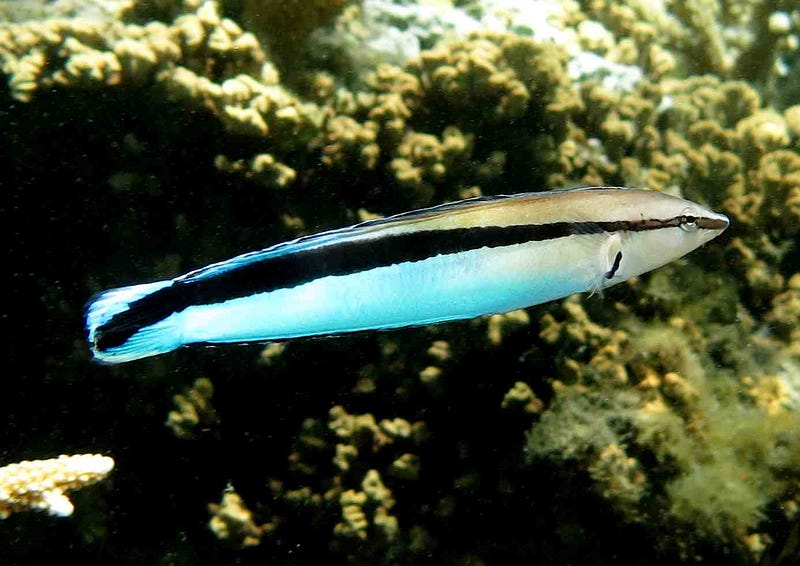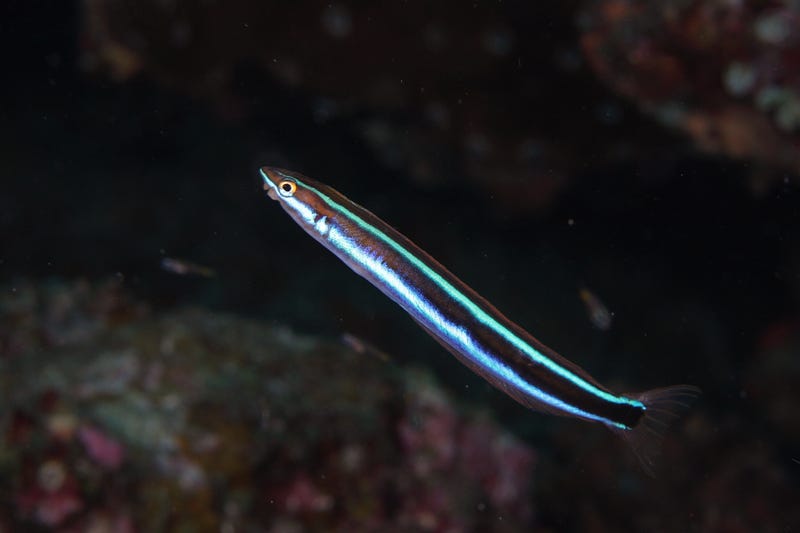
Last week, we looked at fireflies that mimicked other species’ reproductive signals in order to get a meal. This time, the aggressive mimic is not trying to trick the model species (and thus eat it). Instead, the mimic is taking advantage of a mutualistic relationship in order to get a meal. We talked about mutualism during the Season 2 ‘Symbiosis’ topic. Of course, I could only touch on a few possible examples. One relationship that I wasn’t able to write about is that of cleaner fish.
Fish and other aquatic animals accumulate dead skin and ectoparasites that need to be cleaned off. However, lacking flexible or long-reaching limbs to do so themselves, the job is taken up by smaller fish. This is most common in marine environments with species of wrasse or gobies doing the work. It does occur sometimes in brackish and fresh water, but not as frequently.
Cleaner fish use bright coloration to ‘advertise’ their services, usually with a bright blue stripe and a special dance-like swimming motion. The ‘client’ gets clean and the cleaner fish gets an easy meal. The species of cleaner we’ll be focusing on for this story is the bluestreak cleaner wrasse, Labroides dimidiatus. This species is widespread, found on coral reefs throughout the Indian and western Pacific Oceans.

The main purpose of aggressive mimicry is to allow the mimic to get close to its target without it being recognized as a threat. Because cleaner fish must be up close to their clients, they make excellent models for similar-sized fish to mimic. In particular, Labroides dimidiatus has a pair of mimics belonging to the blenny family. The first is Aspidontus taeniatus, also known as the false cleanerfish. It imitates both the coloration and dance of the adult cleaner wrasse. Once a client fish offers itself up for cleaning, the blenny instead tears off a chunk of flesh and flees.

The bluestriped fangblenny, Plagiotremus rhinorhynchos, resembles juvenile cleaner wrasse. They also mimic the client attraction behavior along with the coloration pattern of their model. Furthermore, they have developed methods for safely escaping the duped client fish. As you might imagine, this is important considering the frequently large size differences between cleaner fish and their clients. The fangblenny has a venom containing pain-dulling opioids similar to morphine. This also reduces blood pressure causing disorientation. Thus, the client fish will not feel the pain of the bite and the blood pressure drop gives the mimic a crucial few seconds to escape while the client is distracted.

As client fish get attacked by cleaner mimics, they begin to develop a wariness and an ability to differentiate between the mimics and the models. However, this is further complicated by the fact that many cleaner fish, including Labroides dimidiatus, will occasionally ‘cheat’ their clients and take a bite of flesh or mucus themselves instead of dead skin or parasites. They do this because of the higher nutritional value of those food sources, but only sparingly so as not to drive away the client fish.
Now, as with previous stories this season, picture yourself in the role of the duped organism. You are a large coral reef fish such as a grouper. You are familiar with the various cleaning station locations around the reef and what the cleaner fish look like as well as how they behave. Not getting cleaned will decrease your overall fitness, but attending a cleaning station means risking getting attacked by cleaner mimics, or even the cleaners themselves. Because of the size difference, there is always the possibility of eating these smaller fish, but that can cause the cleaners to avoid your species in the future. The mimicry in this case creates a series of complex relationships. How should you act? What would benefit you the most? In some ways, it resembles the Prisoner’s Dilemma, where individual benefit calls for conflict but maximized overall benefit requires cooperation. Of course, fish are unable to philosophize, so their actions are based much more on heritable behaviors and their overall effects on survival and reproduction.
We’ll have one more example of aggressive mimicry next week. If you like my stories, please like, subscribe, and share them. If you have an idea for a topic for a future season, let me know and if I use it, I’ll give you a shout out in my introductory post.